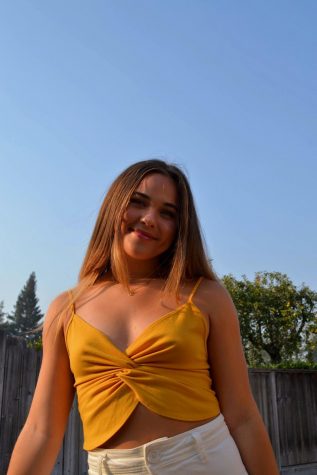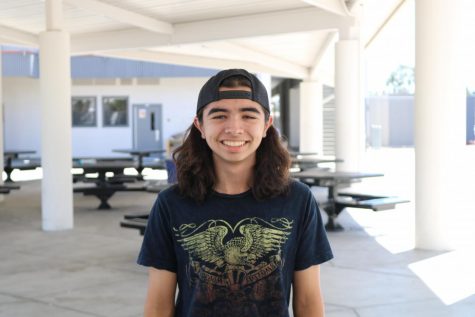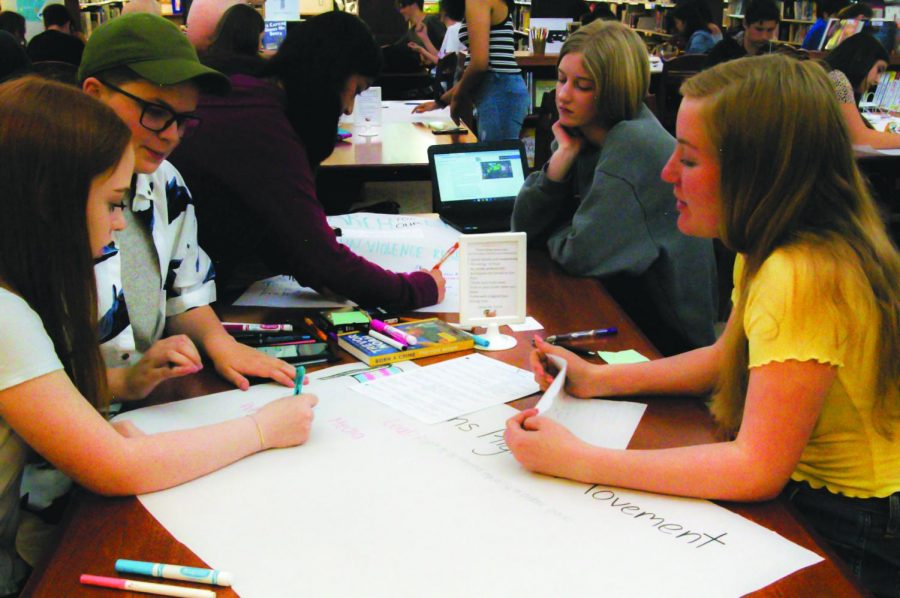Global Studies works with juvenile hall
From left to right, sophomores Emily Meyer, Sam Gilstrap, Katrina Town, and Carina Plechaty design posters to share with incarcerated juveniles as part of teachers Hannah Cheng and Regina Lyon’s global studies class.
Imagine getting the chance to collaborate with students who are behind bars.
That’s exactly what sophomores are doing in their global studies class. Students are in the midst of a unique projectinvolving a school of incarcerated students with one essential question in mind: How can we empower ourselves and others to implement social change?
The class connects World History and English 10 to social issues in today’s world as teachers Regina Lyon and Hannah Cheng try to expand their students’ knowledge and help them be aware of the world outside of San Ramon.
“In Global Studies, we are trying to go beyond the walls of San Ramon and to push our students out of their comfort zone to think about the world in a broader sense,” Lyon said.
When former Cal Principal Sarah Cranford offered the program the opportunity to participate in a project with a school of students at a Bay Area juvenile hall, Lyon and Cheng jumped at the chance to make it a unit for their students.
The project seems to fit perfectly with the main goal of the whole class.
The project consists of small lessons every day that began in April and run through the end of the year. All of the lessons lead up to answering the overarching question of the unit. Students at the other high school will be doing the same activities.
For example, students spent a week talking about an idealistic life or society in a variety of ways, one of which being through a Google form that will be submitted to the teachers at the juvenile hall.
Students were able to see the difference between an ideal life of someone who lives in San Ramon compared to the life of someone who is incarcerated. The biggest difference seen from the work was incarcerated students wanted a life of simple pleasures, such as safety and protection, that students in San Ramon are used to and often take for granted.
“I’m excited to see a different perspective than the one I’m used to seeing,” sophomore Emily Crkvenac said.
Each week students get to see both perspectives on the different issues covered in class. Projects that both schools work on will be shared to give students a chance to see the other class’s work. Instead of communicating in a more common way via emails, facetime, or even face-to-face, global studies and the juvenile hall students will be using writing and artwork.
Collaborating with a school like this is something that has never been done before at Cal and it has excited students.
“[The project] will be interesting,” sophomore Gavin Macdonald said. “I’m excited to be a part of it.”
Being a part of the project also includes getting to know teens that Cal students don’t usually interact with, which is a key part of the project.
“I believe getting to know our peers is really important, no matter what situation they are in,” sophomore Rose Shah said. “ I feel that this project will help me to grow as a person and open my eyes to the world outside of San Ramon.”
Introducing this project to students has already had an effect on the majority of them, and will continue to have one as they get more into the unit.
Eventually, both schools will have students choose a final project to end the unit. The project will consist of a topic students are passionate about to improve society as a whole.
“People from all perspectives can benefit from how we can all make positive change in each others’ lives regardless of where we are in our lives right now,” Cheng said.
Students will present their final project to their classmates, sharing how everyone can help bring change to the problems that need to be fixed.
“Hopefully this will inspire these students to go out and encourage each other to implement social change,” sophomore Mirijam Oosterhuis said. “If we pay it forward, and keep passing down the idea of social change to future generations, eventually and hopefully it will happen.”

Sabrina Contreras is a senior at California High School. She is one of the managing editors of the Californian, and she loves to write. Along with writing,...

Eddy Cordero is a Co-Editor for photography in The Californian. He is a junior who enjoys mountain biking, skating, playing/writing music, And of course...





